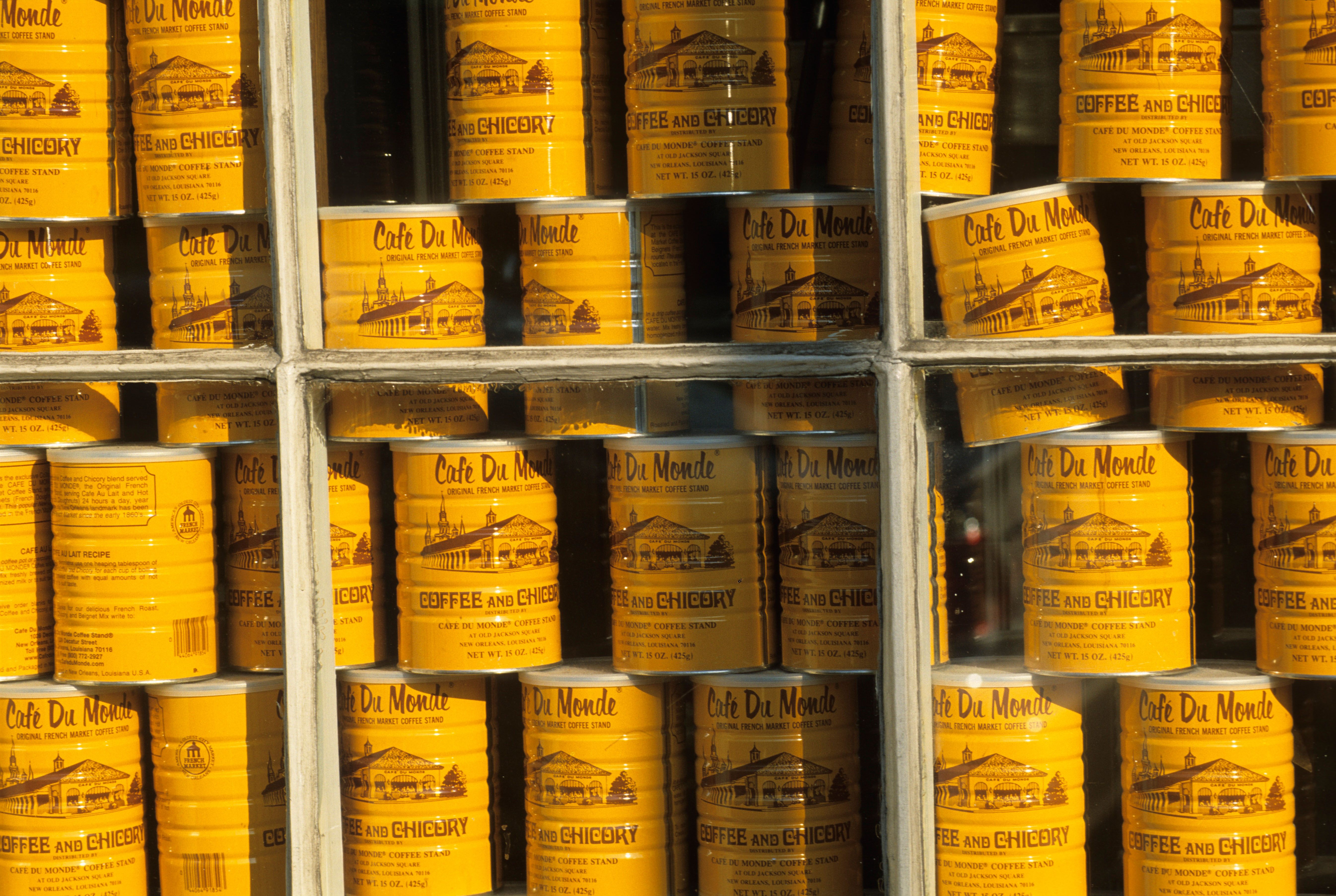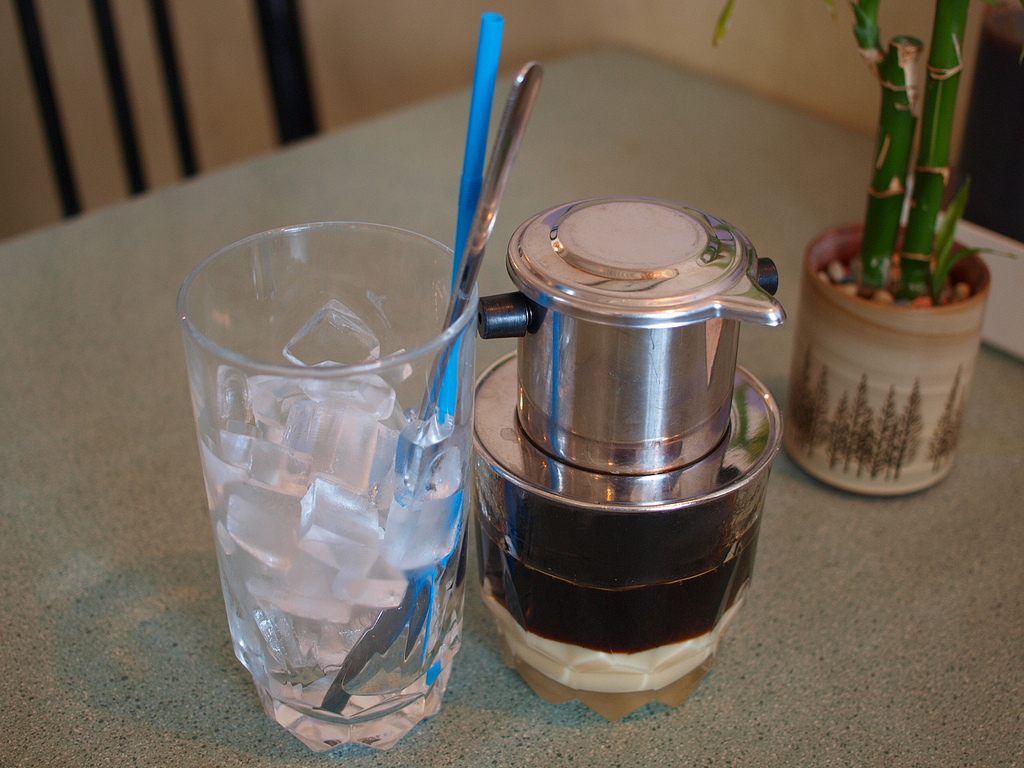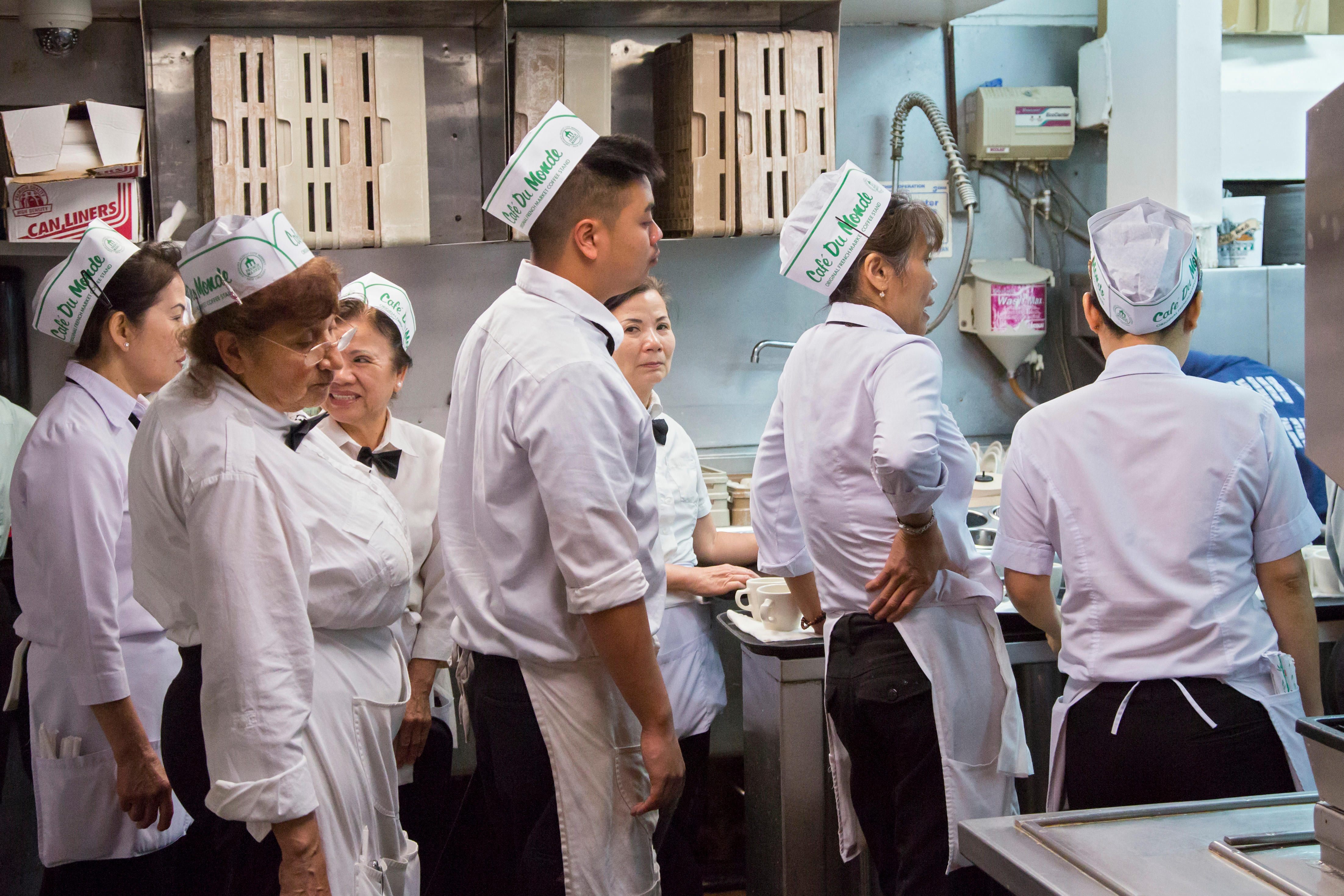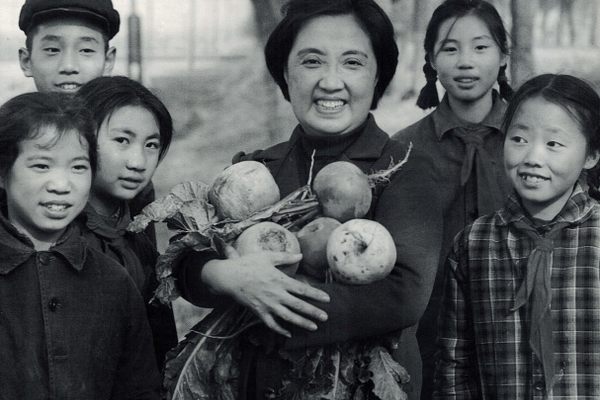The Secret Ingredient to America’s Vietnamese Coffee
Chicory blends from New Orleans provided a taste of home.

In Vietnamese cafes and restaurants across the United States, you see the tins: vivid orange and unmistakable. And if you’ve been to New Orleans, you recognize them from Café du Monde, which is famous for its long history (since 1862) and hot beignets (served under a snowfall of powdered sugar).
The only reasonable accompaniment for a crispy beignet is a cup of milky café au lait, hot milk along with coffee. But not just any coffee. New Orleans has long favored a blend with an unorthodox element: chicory. Before the Vietnam War, this chicory-coffee mix had limited reach outside Louisiana. Chicory coffee might seem inextricable from New Orleans’ almost mythic history and unique culture. But now, it’s also distinctly Vietnamese-American. Through a number of caffeinated coincidences, the combination has spread across America’s Vietnamese coffee shops.

It’s not known who in history first had the bright idea of using chicory as a coffee substitute. But in the 17th century, Europeans newly addicted to coffee weren’t pleased when access was limited, either due to shortages or royal decree. Desperate substitutes included toasted grains such as barley or wheat, ground and filtered to make coffee-like drinks. But a more effective alternative turned out to be chicory root, which can be roast and ground into a similar (but caffeine-free) hot drink.
Coffee made with chicory first spread widely when Napoleon cut off British trade with much of Europe, resulting in what was called the “Continental System.” Napoleon actively encouraged the drinking of chicory coffee, hoping that if France and its allies relied on local products, it would strangle the British economically.

Yet even after the end of that conflict, people continued to drink a blend of chicory and real coffee, because it was cheap and similar enough to the pure stuff. According to food historian Erica J. Peters, author of the book Appetites and Aspirations in Vietnam: Food and Drink in the Long Nineteenth Century, chicory coffee’s wide popularity lasted until the mid 20th century. Plus, the mix was compelling, giving coffee a dark, smoky undertone, more body, and a bitter chocolate tang.
After the French got coffee back, they didn’t waste time spreading it to other colonies. In the 1800s, the French gobbled up territory in Vietnam before establishing French Indochina in 1887. Vietnam’s tropical climate was perfect for growing coffee, and it wasn’t long before the region was a coffee-producing powerhouse. Colonists cultivated chicory in Vietnam too, says Peters, though she has yet to find evidence that it was drunk locally. Coffee soon became essential.
These days, the Vietnamese often temper their powerfully bitter coffee, which is made with high-caffeine Robusta beans and a dark roast, with condensed milk and ice. The metal, cup-top filters used, called phin, likely originated from a type of French single-serve filter. (Peters sent me a picture of one that belonged to the French writer Balzac, who, legend has it, killed himself by drinking too much coffee.)

Trade and colonization also helped New Orleans develop into a coffee center. Because of its proximity to Latin America and the Caribbean, it became the U.S.’s second largest importer of the bean in the 19th century.
As for why chicory coffee became emblematic of New Orleans, there’s a bit of a mystery. It’s popularly thought that locals turned to chicory when their coffee supply was cut off by Union blockades during the Civil War. But some scholars allege that since chicory was also imported, this couldn’t be true. Perhaps it was just chicory’s relative inexpensiveness and unique flavor that kept it popular, especially when mixed into hot milk at the Café du Monde. Louisiana was part of France until 1803, and, like Vietnam, retained a French-influenced cafe culture that emphasized dark, strong roasts—a flavor profile that can benefit from the addition of chicory.
More than a century later, this came to be appreciated by hundreds of thousands of Vietnamese refugees and immigrants who arrived in the United States during and after the Vietnam War. In the 1970s, as they clustered in cities across California, Texas, and the Gulf Coast, which boasted fishing jobs, agriculture, and warmer climates, they found that bland American coffee simply did not suffice. But Vietnamese people in New Orleans did have a recourse: strong coffee with chicory. And since the Vietnamese-American community was relatively small, word of the coffee quickly spread.

Café du Monde was uniquely situated to be shipped across the country. Its iconic orange tins have long been available as New Orleans souvenirs and mail-order items. And as Louise McKinney writes in New Orleans: A Cultural History, Café du Monde hired many Vietnamese employees. When management noticed workers mailing the coffee-chicory blend to friends and family, they began marketing the tins to Asian grocery stores across the country.
Many chicory coffees are now available, as are actual Vietnamese coffee blends. Trung Nguyên, the biggest coffee producer in Vietnam, is stocked in many Asian supermarkets. My own tin of Trung Nguyên Premium Blend notes that one ingredient is cocoa. When mixed with condensed milk, it makes an almost mocha-like brew, reminiscent of how chicory can soften and sweeten a dark, bitter roast. The site of Trung Nguyên’s official U.S. reseller pleads that chicory coffee was a choice of necessity. Coffee with chicory, they write, has “nothing in common with true Vietnamese coffee.” But the company is fighting an entrenched tradition.
It’s remarkable that one particular coffee can evoke so much. Mixed with condensed milk to make a Vietnamese coffee, it’s a powerful symbol of cultural synergy. When mixed with hot milk for a café au lait, it’s a reminder of tradition and continuity. And whether sipped next to the Mekong or the Mississippi, it’s delicious.
Gastro Obscura covers the world’s most wondrous food and drink.
Sign up for our email, delivered twice a week.



























Follow us on Twitter to get the latest on the world's hidden wonders.
Like us on Facebook to get the latest on the world's hidden wonders.
Follow us on Twitter Like us on Facebook